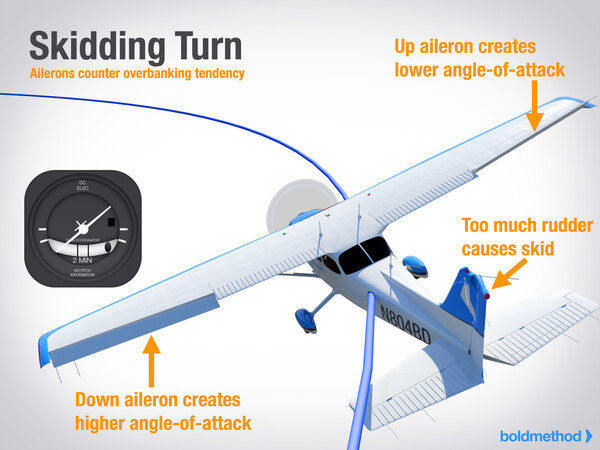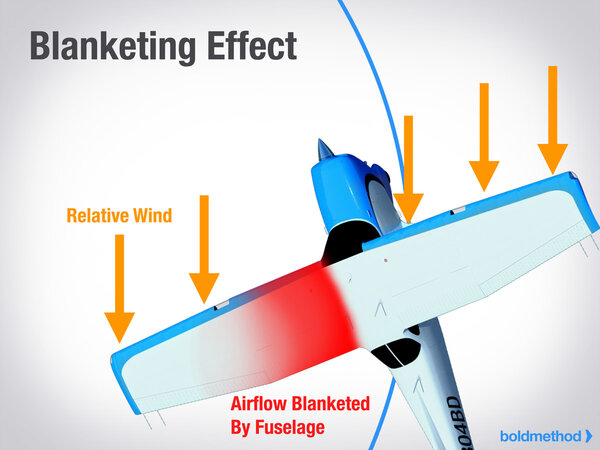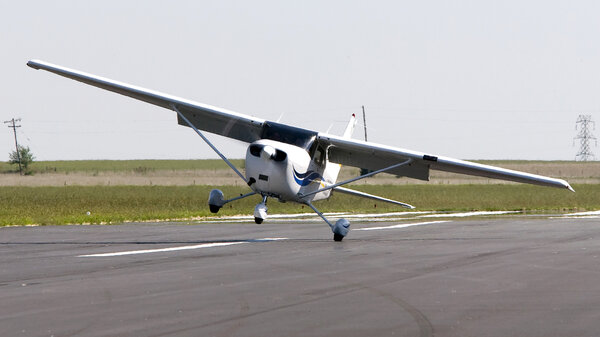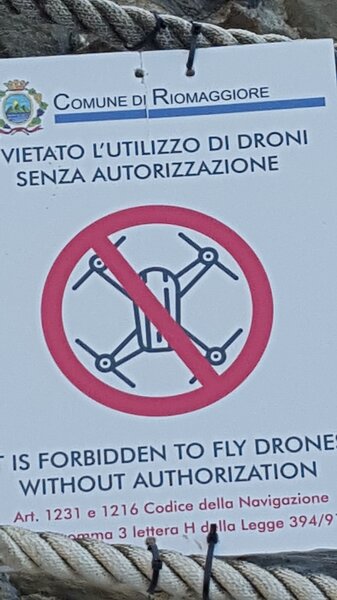-
Posts
1,752 -
Joined
-
Last visited
-
Days Won
39
Content Type
Profiles
Forums
Gallery
Downloads
Blogs
Events
Store
Aircraft
Resources
Tutorials
Articles
Classifieds
Movies
Books
Community Map
Quizzes
Videos Directory
Everything posted by poteroo
-

Nice BRS save. (Cirrus out of fuel over ocean.)
poteroo replied to Garfly's topic in AUS/NZ General Discussion
That's true, but when loading a Baron it's usual to chockabloc the noselocker, then fill the main fuel tanks, then whatever more fuel you need goes in the aux tanks - which are aft in the wing. You may be a little toward the aft CoG limit on take-off, but with nil flap extended this is manageable with trim setting alone. Once in cruise, switch to AUX tanks and use them up completely so that the CoG moves forward. Then when you setup the approach - start highish, use a lower power setting to limit the noseup tendency, and it's unlikely you'll reach a critical CoG situation. happy days, -
Use the intercom for the non-essential calls to allow your instructor to check, but press the mic button only for the essential calls. happy days,
-
I'm unaware of anything specifically prohibiting an aircraft from operating anywhere within the flight strip, (the outer 'gable' markers). Even changing the direction to operate diagonally across a runway can have great benefits: it increases the headwind and decreases the crosswind. I've seen aircraft land 90 deg across strips, on taxiways, into adjacent semi-levelled land, into the next door cropped paddock, and onto roads (in the Nullabor)......... as ol mate Richo says whatever it takes! Having operated a C170, C180 and RV6 for many years in WA, I've saved my bum more than once by ensuring that any accident, (if it happened), would at least be at very low forward speed. happy days,
-

Ethiopian 737-800 Max crash - No survivors
poteroo replied to kgwilson's topic in Aircraft Incidents and Accidents
Could some of these recent jet accidents be in part due to crew reluctlance to switch off the autopilot, or any other system and handfly the aircraft? How much practice does an airline crew get at hand flying on basic panel, ie, power x attitude? Does simulator time equate to actual flight time in these emergency systems? Things are a mighty lot more frightening when there is a large pitch change and it's for real! Several accidents, eg, the Air France one off Brazil, and the AirAsia one off Java have been simple failure to recover from a stall events which crew training/retraining in basics should prevent. But it seems Boeing have built the MCAS into its' 737 Max to avoid needing the pilot input? As said previously - we've come full circle. -
CAAP 166-01 v 4.2 Terms p8, of 37, refers MULTICOM The frequency, (126.7), used for broadcasts in the vicinity of a non-controlled aerodrome that does not have a discrete CTAF assigned (refer to paras 2.1.12 and 6.3.2 for additional guidance) The 'guidance' material continues the nonsense of having aircraft using separate frequencies based only upon the 'aerodrome' being on/off the current WAC. What should be a simple thing to teach our students has been converted into a complicated, convoluted, cringeworthy rule that most, (80+%), of our industry disagreed with in the initial CASA 'survey'. Red flag to a bull that was! An angry poteroo!!
-
Actually, Admin didn't say this - they simply posted it for our information. This CAAP has got to constitute 37 pages of the most contradictory 'advice' one will ever read. I ask you - 37 pages to tell us how to suck eggs? The 'need' for this publication lies solely with the regulators meddling with frequencies for lower airspace when the industry was managing it. More on this under the thread 126.7 happy days,
-
Always. When it comes to a choice between climbing toward, or away, from rising terrain - away wins every time, despite the downwind component increasing as you turn away, or whether it's a RH turn 'against' the accepted circuit LH turn. I was thinking about our general reluctlance to go against the Regs, or the 'rules', even when in some danger. It's highly unlikely that you would cause a flight risk to another aircraft off a remote farm strip, and in any case, you would have made a radio call of your intentions. Sometimes, a pilots gotta do what a pilots gotta do to stay alive! Every day we see the same risk averse behaviour on the road. Car wishes to overtake truck going up a hill, using the provided double lane. However, driver doesn't want to break law by exceeding 100/110 - so sits on exact speed and ever so slowly overtakes and finally gets past after using up a good 1 km of passing lane. IMHO, this road behaviour actually increases risk because very few frustrated drivers can pass the slow traffic when the opportunity presents. If it isn't along a double lane 'passing' section - then it is exposing the overtaker to what I'd consider much greater risk than had they increased speed and broken the limit, albeit temporarily. Anyway, happy days, one lucky pilot lives to fly again.
-
In my case, have not completed the cardio section of Class 1 because of a hitch which is being rectified. Everything else in the renewals list has been completed successfully. Upon reflection, I really couldn't see the need to hold a Class 1 as I no longer bother with scenic or charter work - just instruction. What concerns me is that, where ones' records carry forward some issues in regards to the 'Special Requirements' listed for Class 1 renewal - will these have any adverse effect on the DAME, (or CASA, excepting for psychosis, dementia or epilepsy), allowing the issue of Class 2 medical?
-
Has any instructor on here experience with converting their Class 1 medical back to a Class 2 medical? With CASA? With DAME?
-

Councils cannot afford regional security upgrades, say experts
poteroo replied to fly_tornado's topic in Governing Bodies
Perimeter fencing is a really weak point in regional airport security. Not much use in having 3m high 'Stalag' grade fencing near the terminal, but 1m ringlok for the next 2kms. Another really weak point is in the coming & going of a range of small aircraft, often piloted by non-ASIC ID pilots, often with passengers. They could be anyone, or from anywhere even less secure than the regional airport. Then these aircraft park next to the RPT bays, and often have to walk through them, to access a personnel gate. And, guess what, the code for the gate is under an inside flap. But for many regionals - it's, (big surprise!!), the CTAF frequency. A lot of tightening up needed here before they even think about scanners etc. I did mention 'non-ASIC' pilots above, but I should qualify this - especially after so many suspect people have been busted on capital city airports. How in hell did they get an ASIC? Just having an ASIC isn't any proof that a pilot or person isn't a some level of threat. Once the paranoia spreads beyond Canberra, we are bound to see everyone having to go through security just to get out to an aircraft. And, it will be for each and every aircraft, regardless of tonnage, pax numbers, category, destination or time of day. One of the reasons that REX won the local contract here was that the SAAB weighs less than 20T, so doesn't need full security. All the expensive scanning gear, purchased to service SKYWESTs' 20T+ F50 is corroding away in a storeroom. The City of Albany lost of the equipment, but saved many thousands in operatings with this instant lessening of risk to passengers.... (only a bureaucrat could dream this BS up). What affects us most is the accessibility on these RPT airports. The landing charges we can generally live with, though it's galling to know that they are applied for reason of 'equity' rather than to cover a proven element of 'wear & tear' on the airport. If access becomes too difficult, then it's time to leave and find a new home. -
These IO-520 engines chew thru the avgas at a frightening rate. For flight planning I use a rule-of-thumb 60 LPH, (which is leaned and 75% HP), while for slower flying the fuel burn is 52 LPH, also leaned. Flying it at 65% thus gives some additional margin. ATSB claim the flight was made at 3000 ft, without leaning. I'd assume that the pilot used 65% power. Now 52 LPH + 24% for nil leaning = 65 LPH. So, on departure, the absolute minimum fuel load on board should have been 155 mins x 65 LPH + 45 mins fixed reserve. So, 169L + 49L = 218L. 220L was the fuel load estimate. By any standards, this was always going to be a close call because the pilot claims to have only 'inspected' the fuel. Does this mean dipped with a calibrated dipstick? Was there an onboard fuel computer, and did the pilot know how to use it? Or, did the pilot simply 'eyeball' the fuel gages, peep into the tanks, light the fires and blast off on this air trial. No wonder that fuel mismanagement accounts for 55% of Australian incidents/accidents
-

Mid-air collision narrowly avoided
poteroo replied to Admin's topic in Aircraft Incidents and Accidents
I reckon there's a bit more to this than meets the eye. It may have been that there was some friendly rivalry between companies, causing both pilots to push the power settings up a notch or 2, or 3 - just to see who had the fastest 210. Not unheard of! In any case, the later departing aircraft had a duty-of-care to avoid the preceding aircraft if it intended to overtake same. Can't quite relate to the 'VFR' stuff when ATC clear an aircraft to an IFR level, (6000). ?? happy days, -

Dalby crop duster destroyed
poteroo replied to fly_tornado's topic in Aircraft Incidents and Accidents
The way our regulator is heading, there'll soon be a cognitive function analyser in the cockpit that we are required to obey before start-up. I often hear people comment on age, with an inference toward loss of skills. However, since shedding the urge to self-destruct in my younger career, I reckon I'm actually a safer pilot than ever before. happy days. -

Calculating the radius of a skidding turn
poteroo replied to APenNameAndThatA's topic in Student Pilot & Further Learning
Regardless of which is the principal factor, it is not a very smart idea to lead into a turn with rudder - a habit which I often see during BFRs. It is a very, very dangerous habit if you are at low level, or turning final, because it's likely to kill you. Right from lesson #1, instructors need to be guiding the student towards properly balanced turns at all a-o-b. This is seriously important, because when it comes to slipping the aircraft, the student should immediately, (via L & R 'cheek' feedback), be able to recognise the 'out-of-balance' situation. Slipping down to an upwind mainwheel touchdown in crosswinds is the worst demonstrated item of both the GA and RAAus syllabus. That probably explains why there are so many R-LOC accidents - most of which are reported as being due to a huge, unanticipated gust of wind! -
And it becomes quite a risk when the trip is around 3-4 hrs and has involved a large component of 'boring' flight. If you have an autopilot, disengage it for the last 15 mins into your destination to avoid this 'stiff' effect. happy days,
-
Flare with care for no repair, Flare with dare when winds impair, Flare with flair when crowds do stare. English 101 for Pilots
-
My experience with taildragger Cessnas, (152TT,170,180,185), has been that about 2 deg toe-in is needed because when the weight comes onto the main wheels, there is a force applied to the tyres which effectively 'pushes' them aft. This then straightens the toe-in and the directional control is good. But, the wheels need to be set so that it doesn't allow movement back to a toe-out setting, or directional control becomes difficult. This makes for some interesting excursions when landing on one wheel in crosswinds. If the aircraft is pushed backwards on the ground, you'll see that the wheels will toe-in if setup correctly. The C152 Texas Taildragger was one real s-o-b for directional control. Eventually, we had a look inside the gear boxes and found it had been 'adjusted' with wooden blocks - which didn't hold the toe-in for long. On the ground, it was obviously toed-out, and even when pushed backwards, it never reached even neutral toe-in. Wheel landings were a real adventure in that aircraft! It was a shocker for 3 pointers too - the rudder was sweptback, and of limited effectiveness, and because the gear legs didn't include a vertical section,(as in the original Bolen conversion), the tailwheel usually hit before the aircraft fully stalled onto 3 wheels. My trusty C170 suffered from sagging gear legs, (bowed inwards), so I had the legs re-tempered, giving them the classic C180 outwards bowing result. The I fitted 8.00 tyres. It was just slightly toed in, and was the sweetest handling tailwheel Cessna I've ever flown. The height of the door sill was thus lifted to exactly the same as a C180, thus countering the bad effect of fitting a larger Scott tailwheel in place of the ancient small, solid one. This allowed the C170 to do 3-point landings without hitting the t/w 1st. happy days, and all the best for New Year.
-
Never was said a truer word. Density altitude will also dictate just how close in you should fly the circuit because the last thing you need to be is wide out on a warm day at a medium altitude day. eg, Glen Innes is 3431 amsl, so on a 30 degree day that makes it 6000 ft DA. Given you are flying a 1000 ft circuit, there is not a lot of climbing ability in your 100HP aircraft from a missed approach. Keep in close and avoid too much reliance on power for the approach. Coasties tend to become complacent about their circuit because there's usually power in reserve. I was taught to keep the intended runway/strip about half-way up the LH wingstrut on a Cessna. It's worked well for me over several hours in C170, 172, 180, 182, 185, & 206 aircraft. It works for my students in the Brumby too. From this positioning, it should be possible to make a gliding turn onto the intended runway/strip should the noise cease. For low wings I was taught to locate the strip on/just over the wingtip (wide) or on the mid point of the aileron, (close circuit). happy days,
-
This incident should have been nipped-in-the-bud had the SAR 'report' been shared immediately with Perth Radar, or Melbourne Centre. Perhaps the initial 'SAR report' was to Channel 7, 9, 10, or ABC? or even more likely - on social media of one sort or another? The Warrior would have been squawking 1200, and probably was on Perth Radar frequency? As it was only just past 36nm Perth, it would presumably been clearly visible to Perth Radar? Surely so? All it would have taken was one press on a mic and it could have been resolved in minutes. Its' location was interesting too. It was inside R155B, but outside R155A - part of RAAF Pearce airspace, but only when active. At 1330 on a Saturday, our nations' defence capability is on stand down. So, the Warrior was perfectly at liberty to conduct PFLs in this airspace. Why you'd be doing this in that location is unknown, because it's well away from any 'official' training area, and is within a region notable for small holdings and having many horses and stock in paddocks. What might be up for discussion is whether the practice was allowed to descend to, or even below 500 agl, and whether the aircraft tracked over dwellings. The lower the aircraft is allowed to descend in these exercises, the more 'alarming' is the event to the general public. This especially so in timbered country where it disappears from view of the ground observer. Another 20nm further north and you are in more open country with larger paddocks and far less horses. Just a few musings. happy days.
-

Dalby crop duster destroyed
poteroo replied to fly_tornado's topic in Aircraft Incidents and Accidents
Possible it might not have dumped the fertiliser completely before touchdown - hence the apparent heavy impact. Fertiliser 'bridging' in the hopper used to be a major issue, (prevented rapid dumping), back in the superphosphate days, (lots of fines in it), but urea less likely to do this. Perhaps in very humid conditions it might? No aggie wants to be facing a forced landing at MTOW! And if the paddocks were wet, maybe the weight, and high vertical ROD, actually prevented the gear digging in and causing it to go A over T? A good result in anyones' language. happy days, -
Saw this signage recently in Italy. Popular tourist area with steep slopes covered in dwellings. Was told it had more to do with 'invasion -of-privacy' concerns as the paparazzi in Europe are noted for their blatant trespassing.
-

Brumby owner the new MHR for Mallee?
poteroo replied to poteroo's topic in AUS/NZ General Discussion
He's fallen into the classic 'honey trap' so commonly used to entrap pollies. Shades of many scandals dating back through the ages. We can't label Andrew as a Brumby owner any more - he's owned a Cessna for the last 2 years. Muy bad exposure for Brumbys though! Reckon the current owner will be thinking of a repaint!! Seems like the high altitude of Canberra, the rareified air, and lack of real work, affects Hon Members from all sides of the House. Don't think it's the water because that isn't the drinking fluid of choice. He'll survive if he fesses up and amends his ways. Denial isn't an option tho. -

Lion Air Accident - Emergency AD for B737 max-8
poteroo replied to Garfly's topic in Aircraft Incidents and Accidents
My greatest concern with this accident is that the aircraft was flown by 3 different crews over the preceding 3 days, and they all experienced trim problems. However, these crews were smart enough to disable the autopilot trim system and hand fly the 737 to a safe conclusion. It's now evident that not all crews were this resourceful. For reasons unknown, they either, 1 - failed to report it via writing in the official system, or 2 - reported it verbally, or 3 - thought no more about it as they had fixed the system, or 4 - they did correctly report it - but it was returned to line with the problem remaining. Which begs the question - how? This reminds me of the 'bad old days' in PNG, where you were unwise to put anything on the MR except a complete engine failure. (assuming you survived!) Companies had unwritten 'rules' that any issues went onto a 'snag-sheet', which I'm sure didn't ever reach the retained paperwork system. -

Par Avion BN-2 Accident South West Tasmania
poteroo replied to Rotorwork's topic in Aircraft Incidents and Accidents
It's not unheard of for pilots to admit to flying just a little closer to the limit when by themselves, and especially so if the flight is to pickup pax who are known to be waiting at a remote location. Publicly, we all deny any 'commercial pressure', but it's part of a charter pilots career. Anyone who has flown charter in the tropic monsoon season, or in mountainous terrain, quickly learns when to turn back. Most of us rode our luck and made it home, but many of my peers didn't. I feel for her family and friends. RIP













